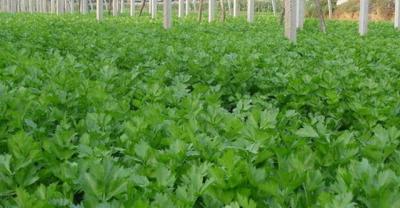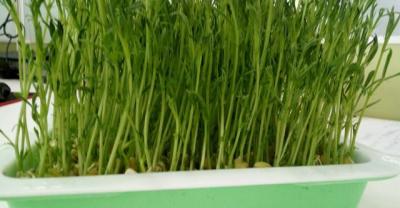Sweet corn high-yield planting technology, sweet corn is really genetically modified sweet corn is genetically modified
I. isolated planting
Sweet corn should be planted in isolation from ordinary corn or other types of corn to avoid flour. Spatial isolation and time isolation can be used, but spatial isolation is better. If spatial isolation is adopted, the general plain area is more than 400m. If there are natural barriers such as forests, hills, houses, highways and so on, the isolation distance can be appropriately shortened. If time isolation is adopted, the difference in sowing time should be more than 30 days. In short, the principle is not to make the two kinds of corn pollen meet.

Second, fine soil preparation, adequate application of basic fertilizer, shallow sowing and fine sowing
Because the starch content in sweet corn grain is low, and the ability of germination and arching soil is weak, the plots with loose soil, good fertility, good soil moisture and convenient irrigation and drainage should be selected when planting. In areas with favorable conditions, high-quality rotten barnyard manure 1000~1500kg can be prepared per mu, plus calcium superphosphate 15kg can be fully mixed and retted, and applied before sowing. Sowing should be fine, 3-4 grains per hole, and the sowing depth is slightly shallower than that of ordinary corn, generally covered with soil 4cm.
Third, sowing by stages
Sweet corn is grown to sell fresh ears on the market or to supply canned food in factories, which is completely different from ordinary corn. At the same time, sweet corn cannot be released for a long time after harvest. Therefore, the planting of sweet corn should be sowed in stages according to the market demand and factory processing capacity, and the early, middle and late maturing varieties should be matched to improve economic benefits.
IV. Reasonable close planting
The planting density depends on the characteristics of varieties, soil fertility, sowing date and planting mode, and pay attention to the commercial performance of fruit ears. In general medium fertility soil, 4000 plants per mu is suitable, early-maturing varieties can be denser, late-maturing varieties can be sparse.

V. strengthening field management
1. Check seedlings and replenish seedlings, and fix seedlings between seedlings
After emergence, the seedlings should be checked in time, and the seedlings should be fixed when the seedlings have 3-4 leaves and 4-5 leaves. The principle of inter-seedling determination is to divide the seedlings from large to small and leave them in the middle, so as to ensure the uniformity of seedlings in the whole field.
two。 Pay attention to topdressing and ploughing in time
General mu topdressing organic fertilizer or soil fertilizer 1000kg, urea 30kg (topdressing 7.5kg at seedling stage and jointing stage, 15kg at big trumpet stage), potassium chloride 5kg / mu, potash fertilizer and organic fertilizer or soil miscellaneous fertilizer at one time at seedling stage. Topdressing should be applied as deeply as possible, and the soil should be covered in time after application. After each topdressing, weeding should be done in the middle ploughing, and attention should be paid to flat, broken and loose so as not to hurt the seedlings.

3. Watering in case of drought
Areas with irrigation conditions should be irrigated in time at seedling stage, loudspeaker stage and filling stage.
4. Pest control
For underground pests, phoxim 0.5kg plus fine sand 25~30kg per mu can be applied at seedling stage, and carbofuran particles can be used for corn borer at heart leaf stage or end of heart leaf stage.
VI. Go to male in time
Timely emasculation is a key cultivation technique to ensure high yield and high quality of sweet corn. But timely emasculation is the key to technical success. If the castration is too early, it is easy to bring out the parietal lobe; if the castration is too late and the nutrition is consumed too much, it will lose the meaning of castration. When harvesting corn shoots, the male ear should be castrated when the male ear exceeds the top leaf, and the young ear of sweet corn should be male 2-3 days after the male ear is dispersed.

7. Timely harvest
The harvest time of sweet corn has a great influence on its commodity quality and nutritional quality. Early harvest, less grain content; late harvest, the pericarp hardened, more residue, loss of the unique flavor of sweet corn. Generally speaking, the suitable harvest time is 20-23 days after ear pollination; for the purpose of canning, it can be harvested 1-2 days earlier, and those that mainly sell fresh ears can be harvested 1-2 days later.

New farmers United network-committed to professional, intelligent, data-based agricultural e-commerce platform. For more information, please follow the Wechat official account: xinnonglianhe or Baidu "Xinnong Union".
Sweet corn has a long history, and purple corn and flower-grain corn also have their own genetic changes, which has nothing to do with transgenic technology itself. Moreover, China has not approved the commercial cultivation of such genetically modified corn, so it is unlikely to buy genetically modified sweet corn on the market.
- Prev

Family planting management method of lavender
Can lavender be kept at home? Choose a suitable flowerpot or container, reasonable lighting and watering, so that you can also have Provence style at home. ...
- Next

Planting method of potted pomegranate
Pomegranate is rich in vitamin C, pomegranate leaves, pomegranate peel, pomegranate flowers are very good medicinal materials, not only can clear heat and detoxification, hemostasis can also drive mosquitoes and toothache.
Related
- Fuxing push coffee new agricultural production and marketing class: lack of small-scale processing plants
- Jujube rice field leisure farm deep ploughing Yilan for five years to create a space for organic food and play
- Nongyu Farm-A trial of organic papaya for brave women with advanced technology
- Four points for attention in the prevention and control of diseases and insect pests of edible fungi
- How to add nutrient solution to Edible Fungi
- Is there any good way to control edible fungus mites?
- Open Inoculation Technology of Edible Fungi
- Is there any clever way to use fertilizer for edible fungus in winter?
- What agents are used to kill the pathogens of edible fungi in the mushroom shed?
- Rapid drying of Edible Fungi

